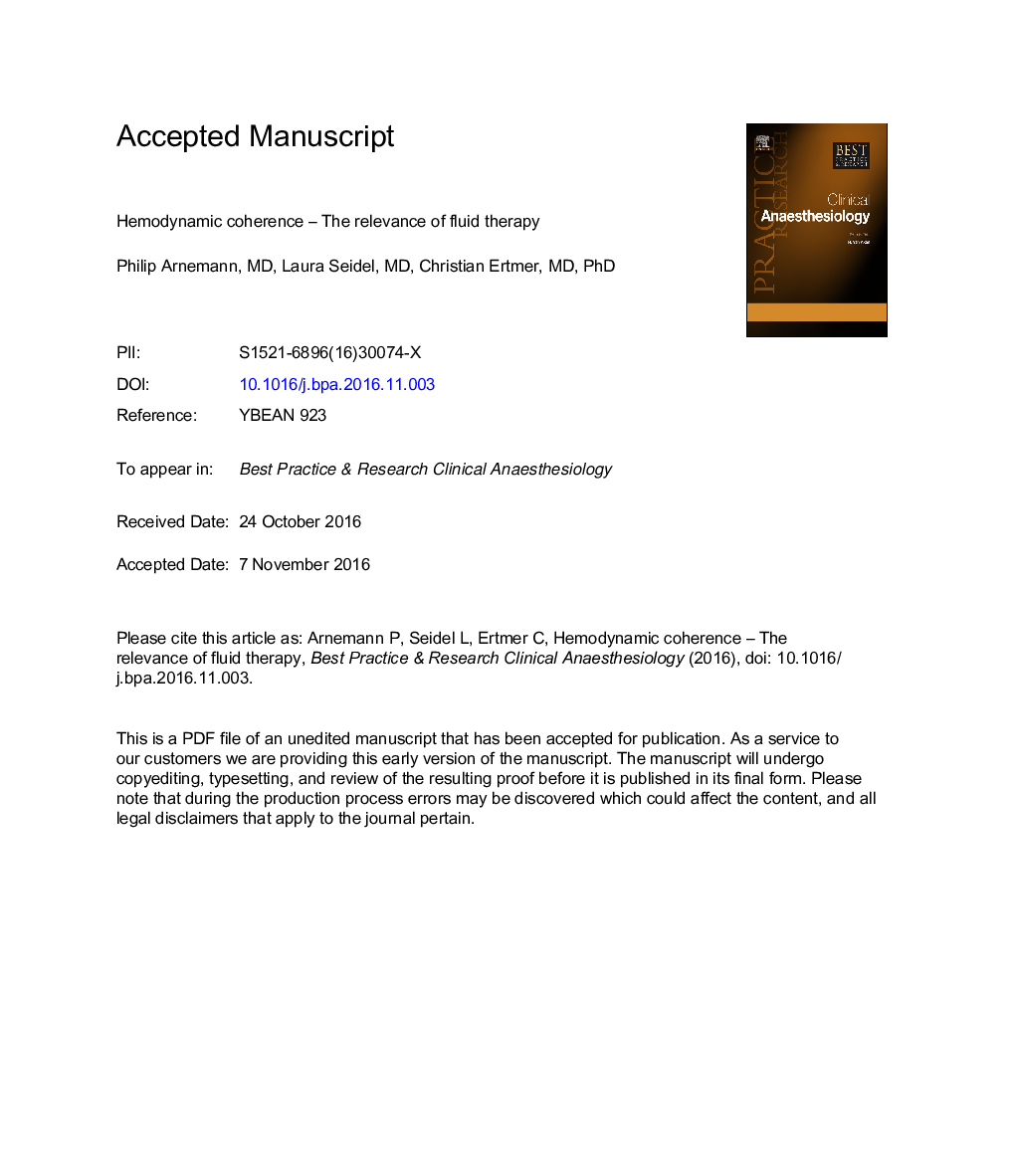| Article ID | Journal | Published Year | Pages | File Type |
|---|---|---|---|---|
| 8610944 | Best Practice & Research Clinical Anaesthesiology | 2016 | 27 Pages |
Abstract
The ultimate goal of fluid therapy is to improve the oxygenation of cells by improving the cardiac output, thus improving microcirculation by optimizing macrocirculation. This haemodynamic coherence is often altered in patients with haemorrhagic shock and sepsis. The loss of haemodynamic coherence is associated with adverse outcomes. It may be influenced by the mechanisms of the underlying disease and properties of different fluids used for resuscitation in these critically ill patients. Monitoring microcirculation and haemodynamic coherence may be an additional tool to predict the response to fluid administration. In addition, microcirculatory analysis may support the clinician in his decision to not administer fluids when microcirculatory blood flow is preserved. In future, the indication, guidance and termination of fluid therapy may be assessed by bedside microvascular analysis in combination with standard haemodynamic monitoring.
Related Topics
Health Sciences
Medicine and Dentistry
Anesthesiology and Pain Medicine
Authors
Philip (Resident in Anaesthesiology), Laura (Resident in Anaesthesiology), Christian (Associate Professor of Anaesthesiology),
